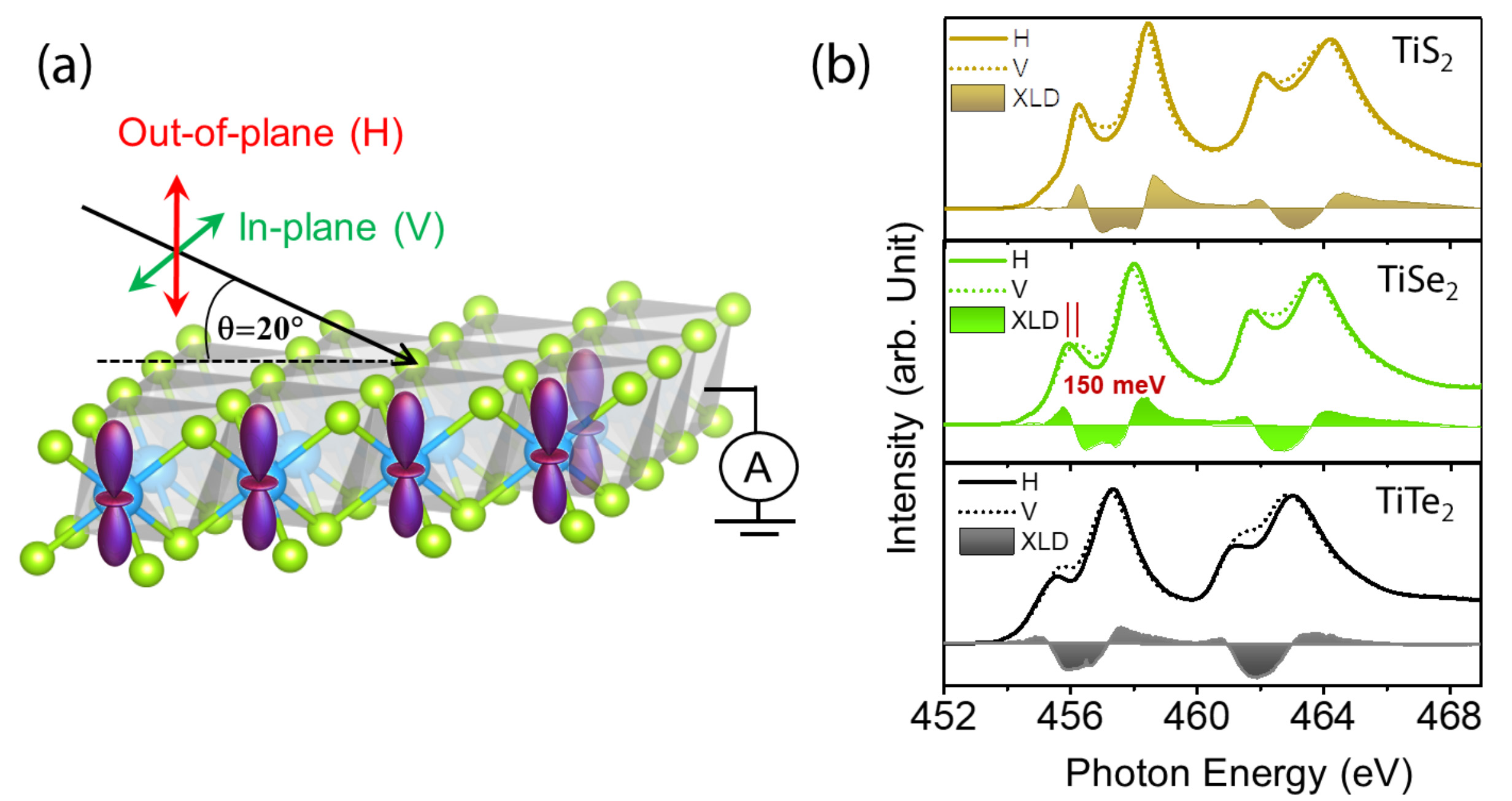The relentless drive toward the miniaturization of silicon-based electronics has ignited exhaustive research into a wide range of two-dimensional (2D) layered materials. As a result, 2D transition-metal dichalcogenides (TMDs) have emerged as a promising platform with potential applicability in microelectronics, nanophotonics, optoelectronics, photovoltaics, and more.
In one family of TMDs, the chalcogen ions (S, Se, or Te) form octahedral cages around a central transition metal (Ti). Certain deformations of the cage structure can lead to novel electronic phases, including charge density waves, superconductivity, insulating ground states, and Weyl semi-metallic phases.
To better understand these phenomena, researchers probed the electronic orbital structure of TiS2, TiSe2, and TiTe2 using a combination of lab-based x-ray photoelectron spectroscopy (XPS), theoretical calculations, and x-ray absorption spectroscopy (XAS) with x-ray linear dichroism (XLD) contrast at Beamline 4.0.2 of the Advanced Light Source. Polarization-dependent XAS can reveal local orbital character relative to the crystallographic axes; for example, it can be sensitive to the splitting of degenerate states that may emerge from local lattice distortions.
In sharp contrast to the prediction by conventional models of an elongated distortion with degenerate states, the data revealed an anomalously large (up to 150 meV) crystal-field splitting of the valence electron states. The researchers attribute this to the strong hybridization of the metal–chalcogen orbitals. The results unambiguously demonstrate the failure of the standard ionic-configuration and distorted-crystal-field picture in predicting electronic ground states, thereby revealing the key importance of metal–ligand hybridization between titanium and chalcogen ions in defining the electronic properties of TMDs.

B. Pal, Y. Cao, X. Liu, F. Wen, M. Kareev, A.T. N’Diaye, P. Shafer, E. Arenholz, and J. Chakhalian, “Anomalous orbital structure in two-dimensional titanium dichalcogenides,” Sci. Rep. 9, 1896 (2019), doi:10.1038/s41598-018-37248-5.